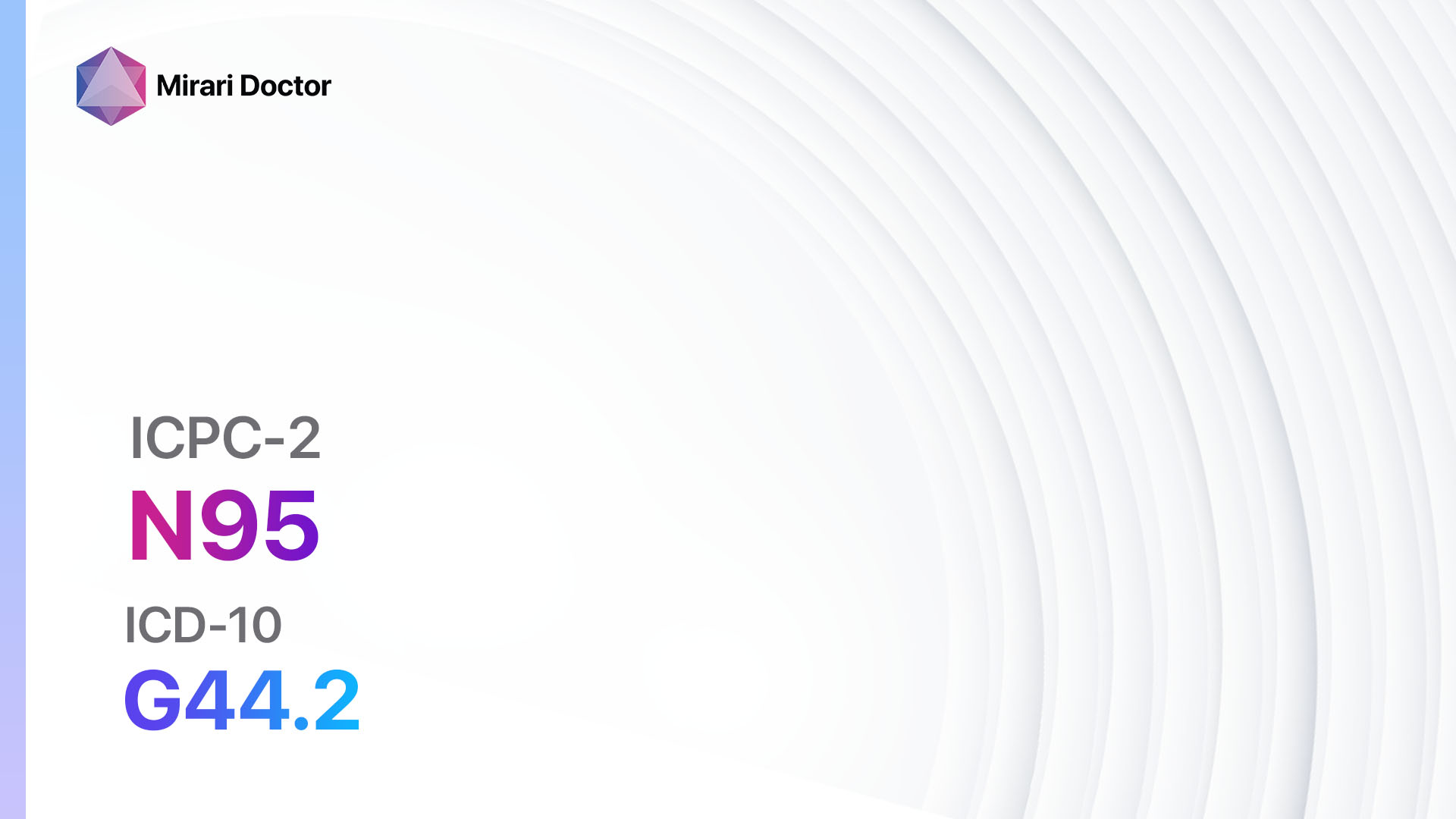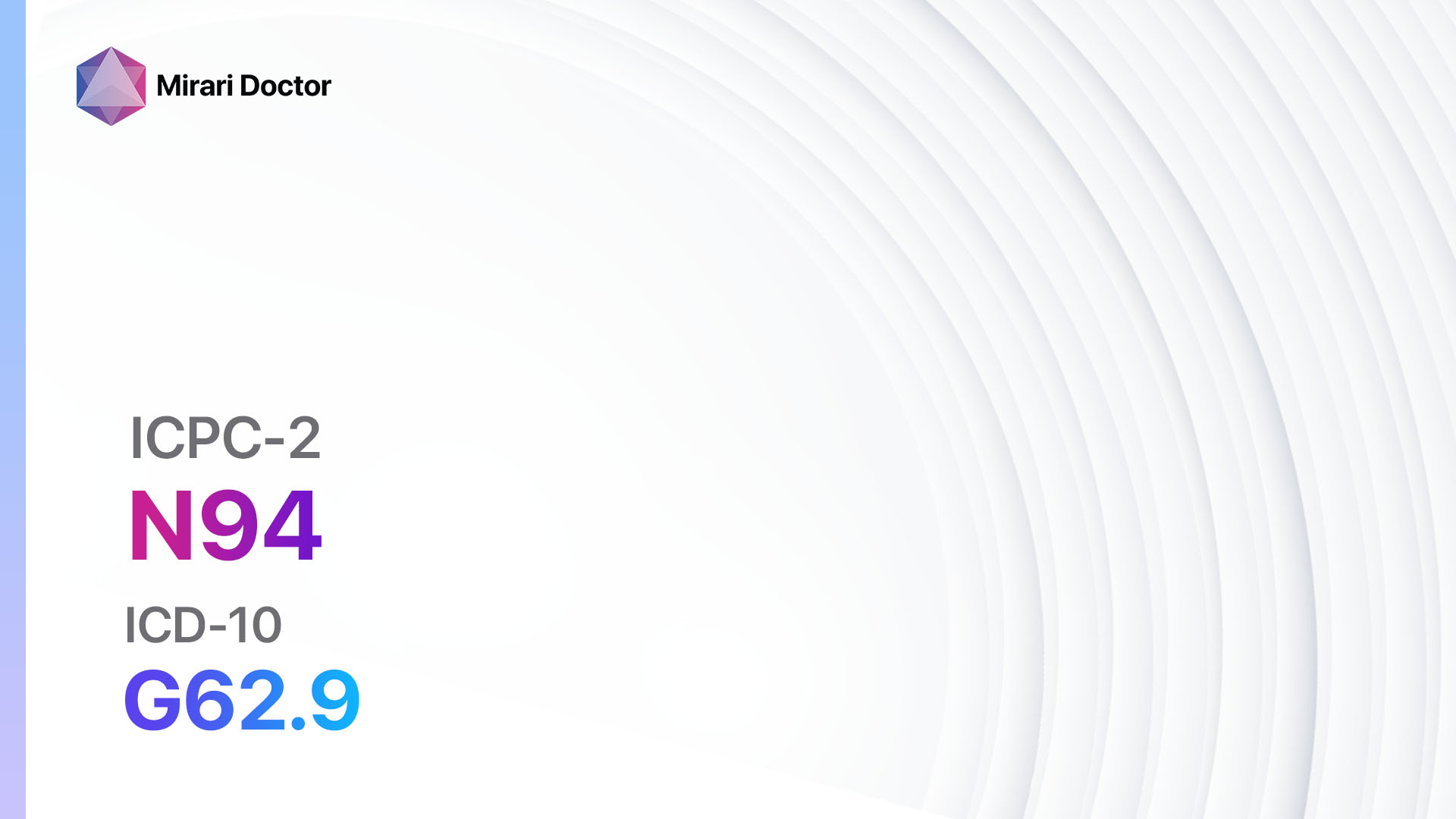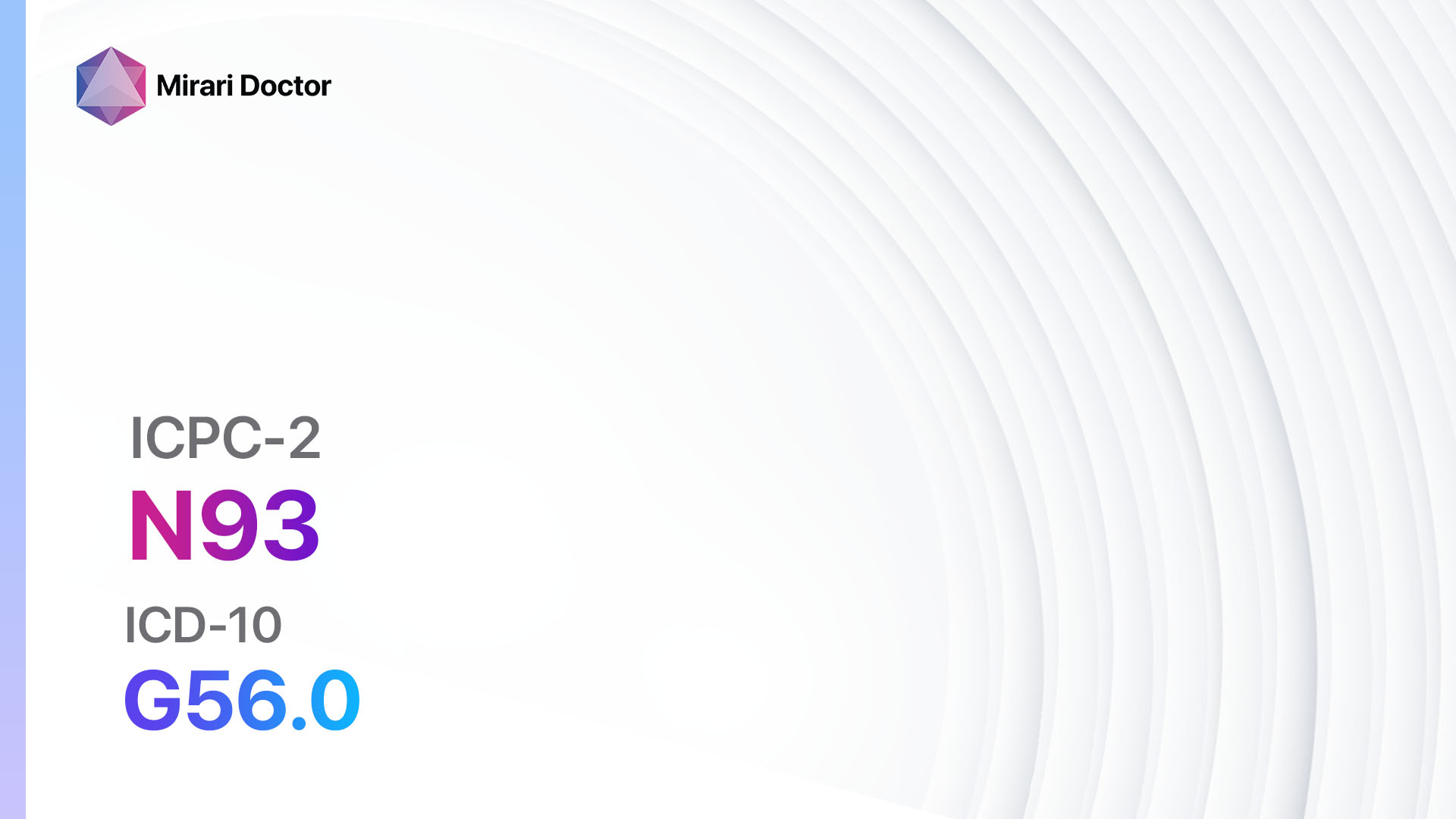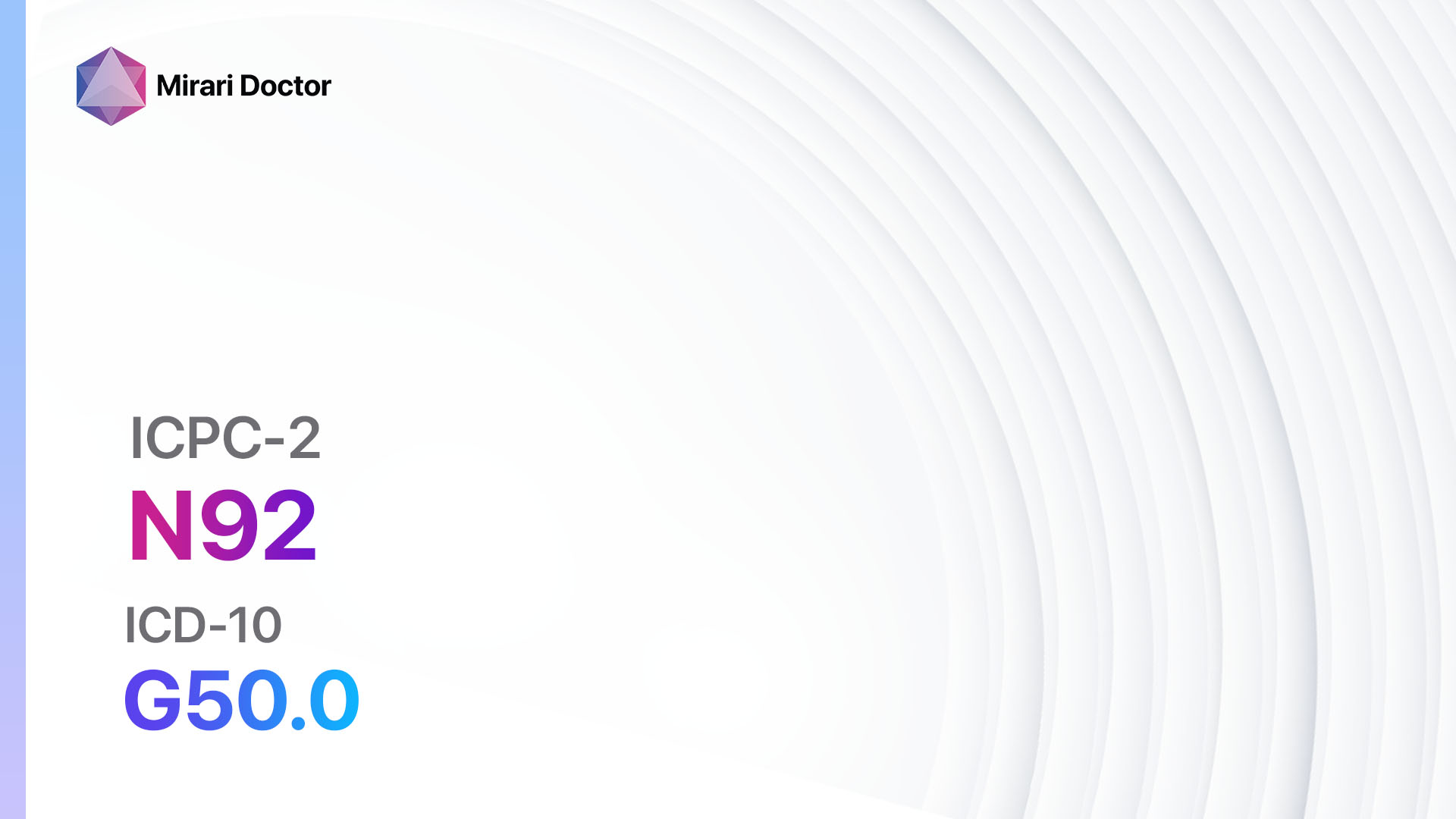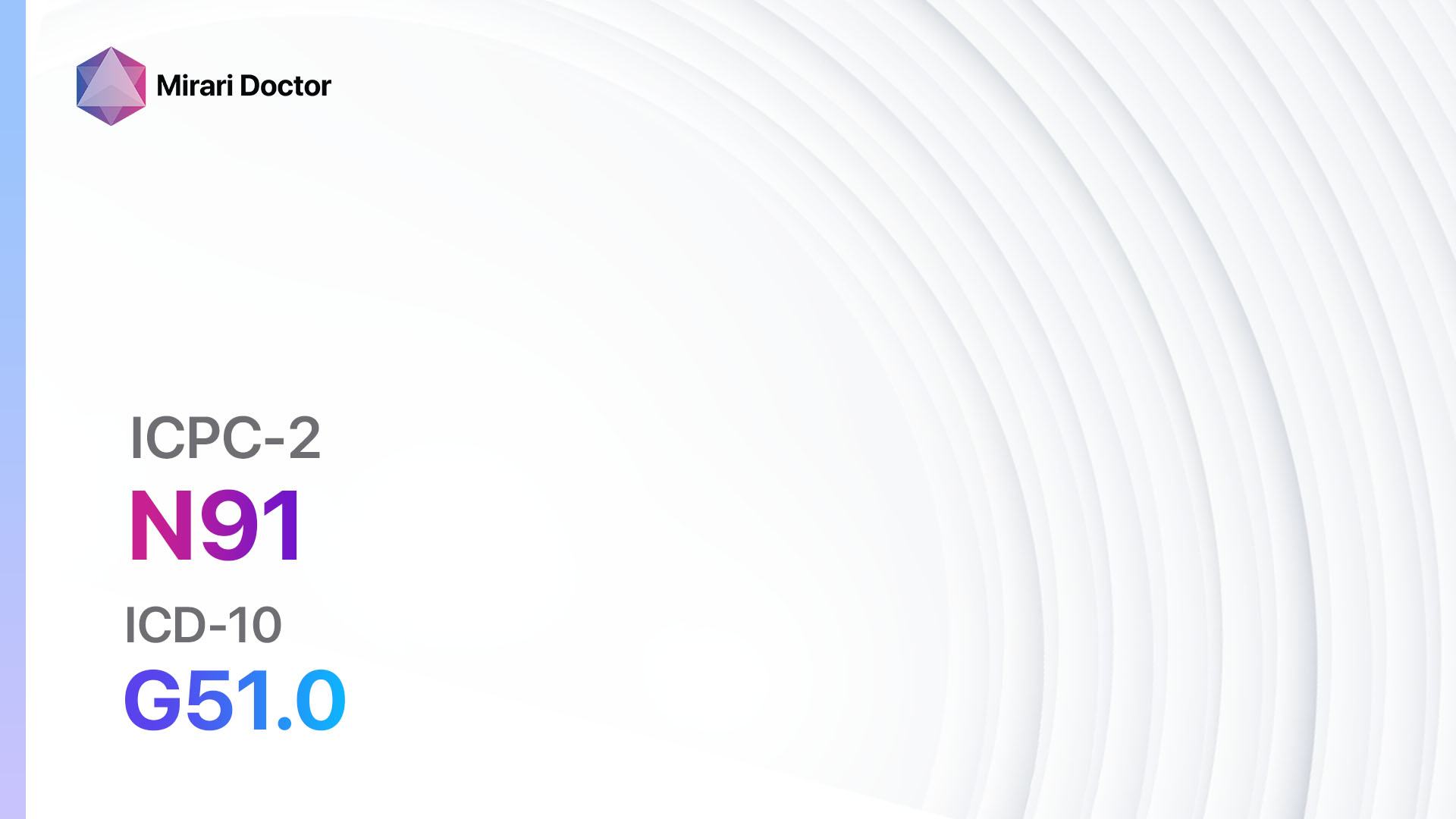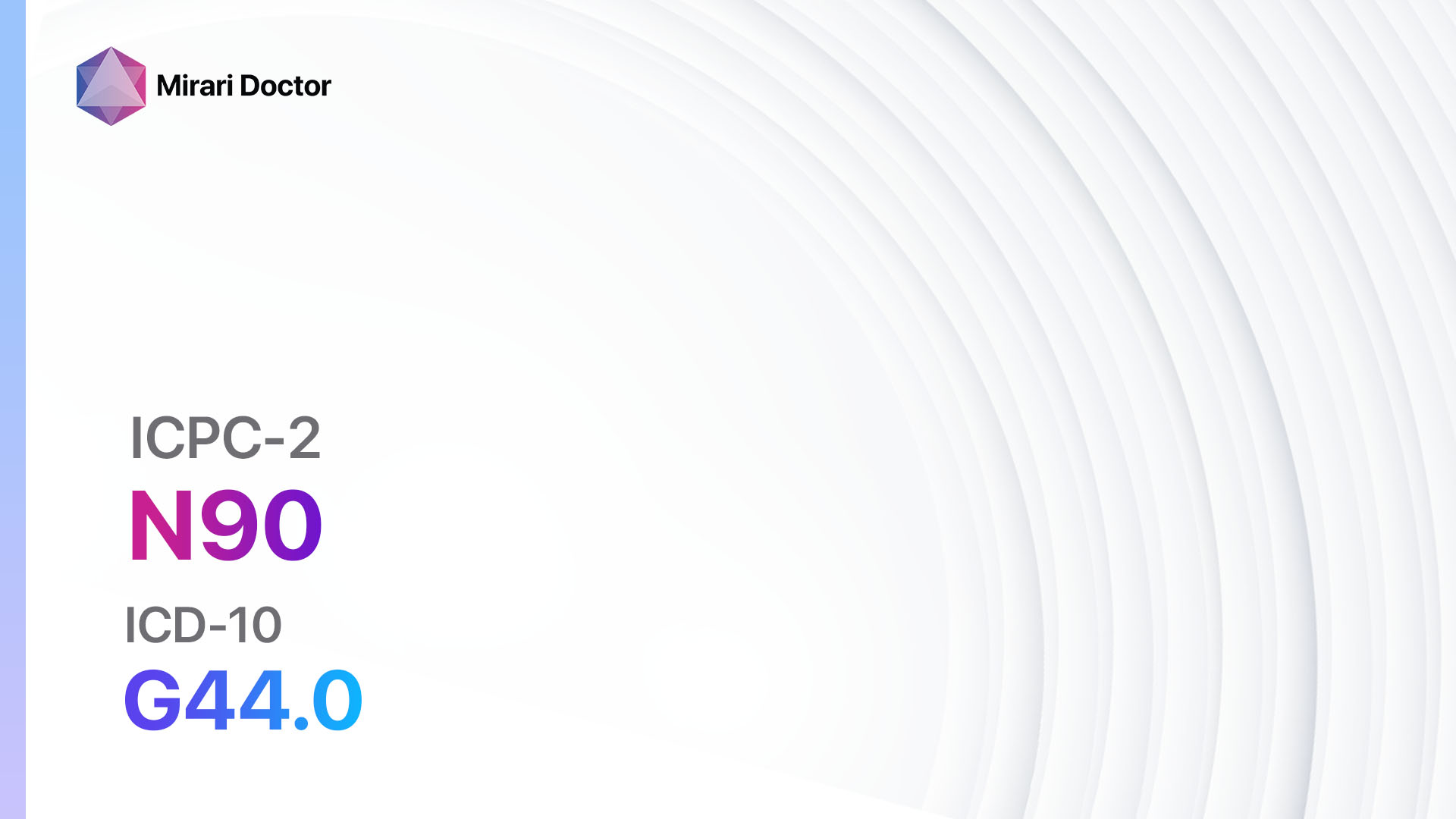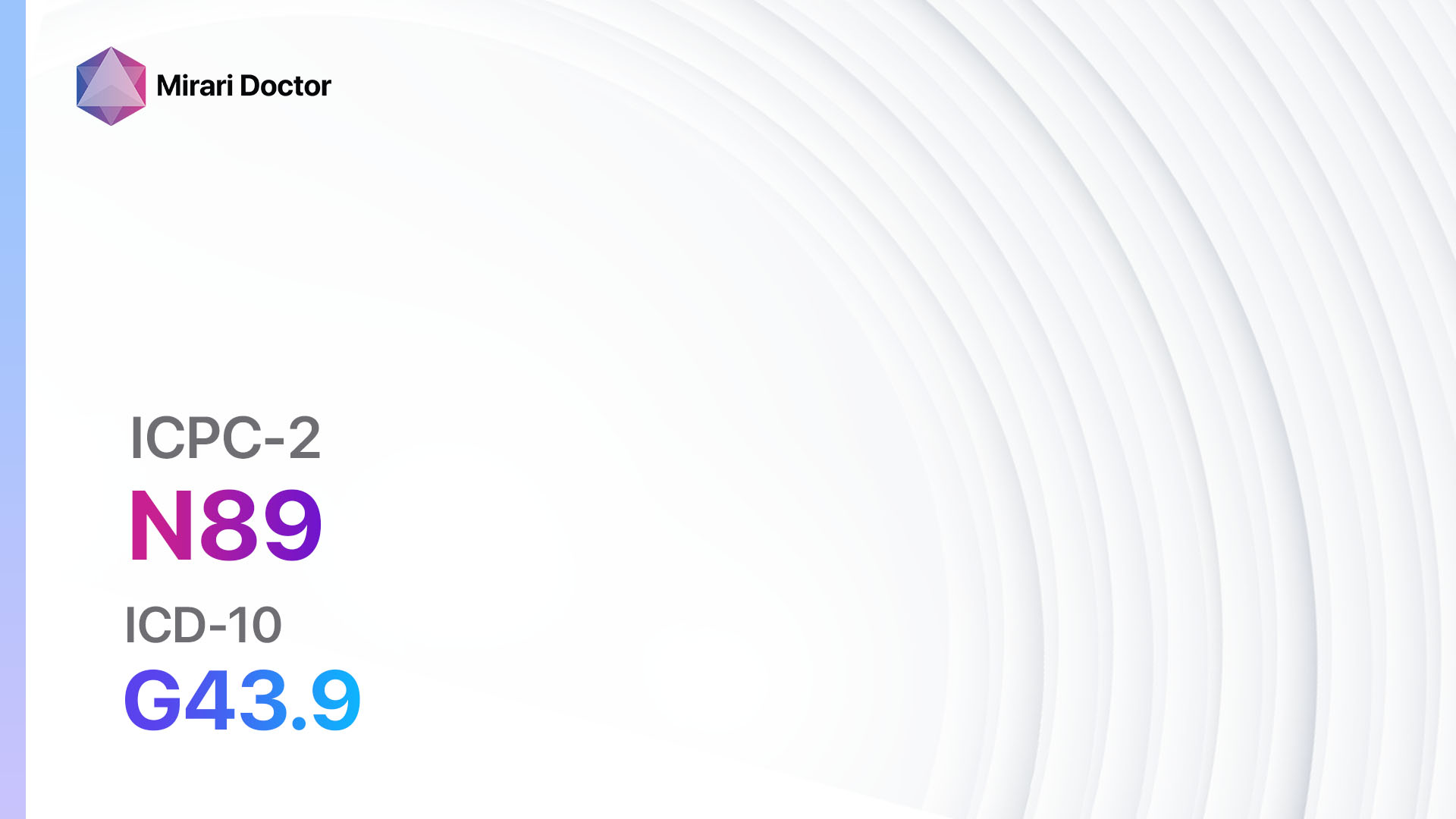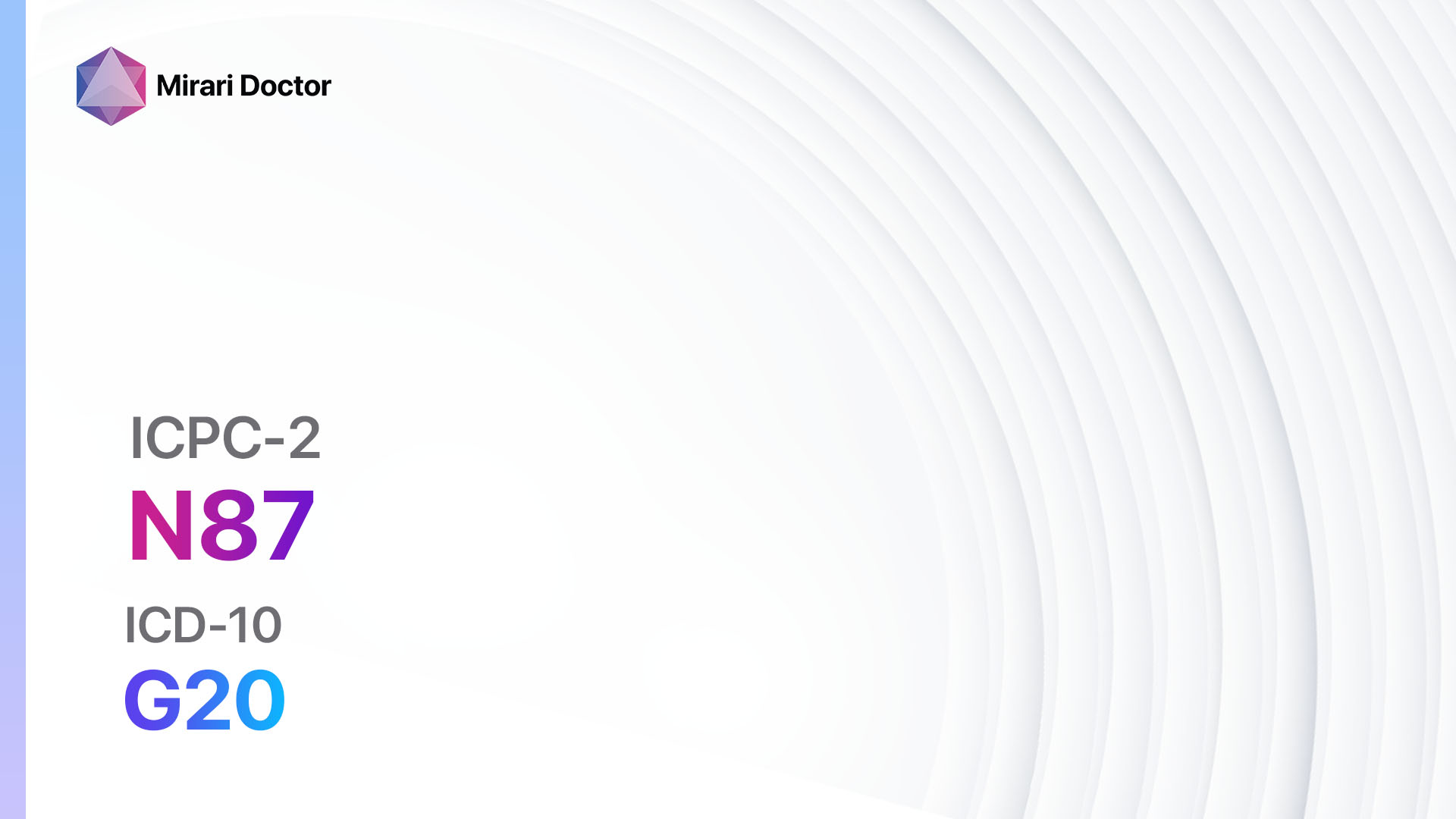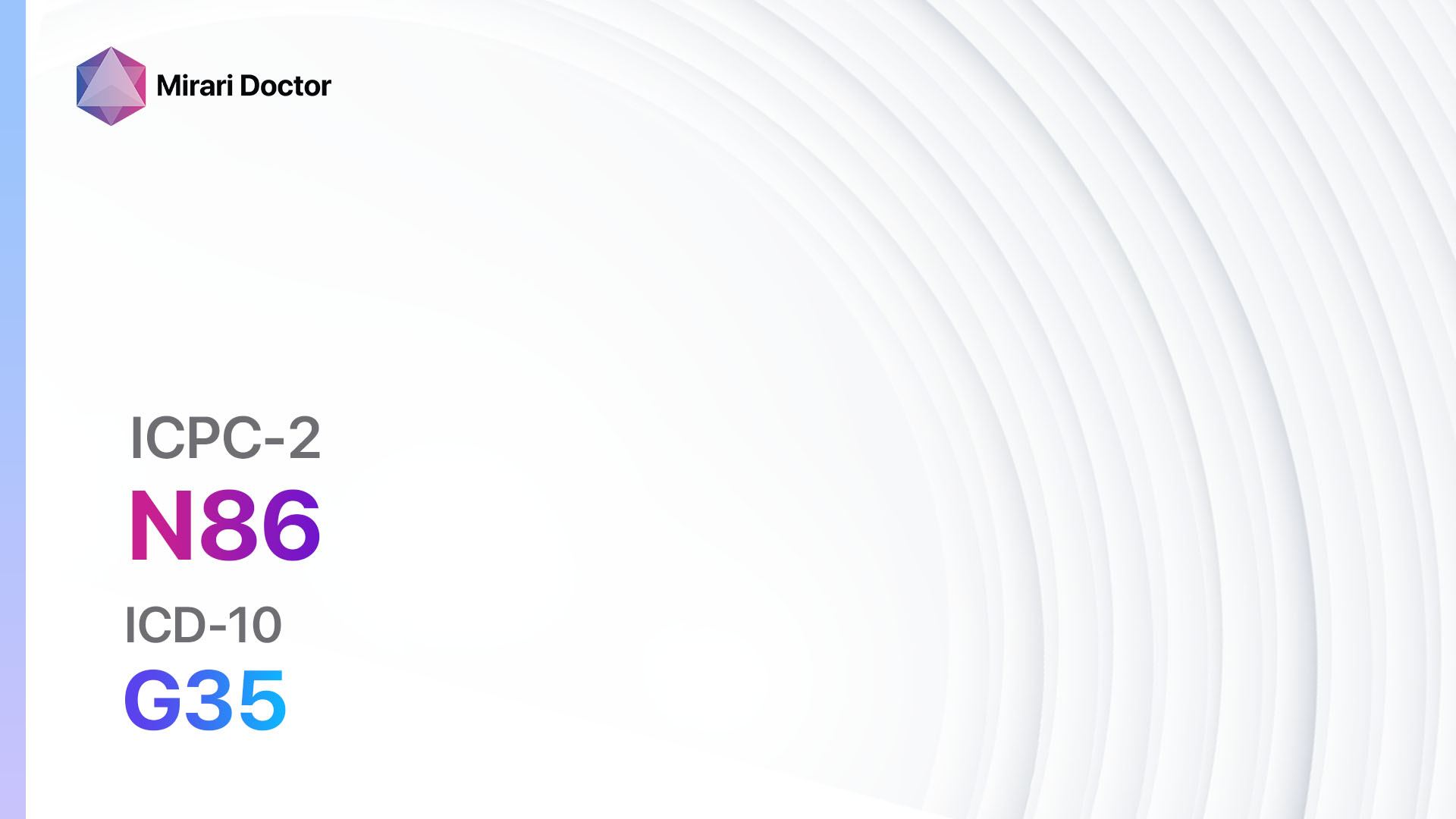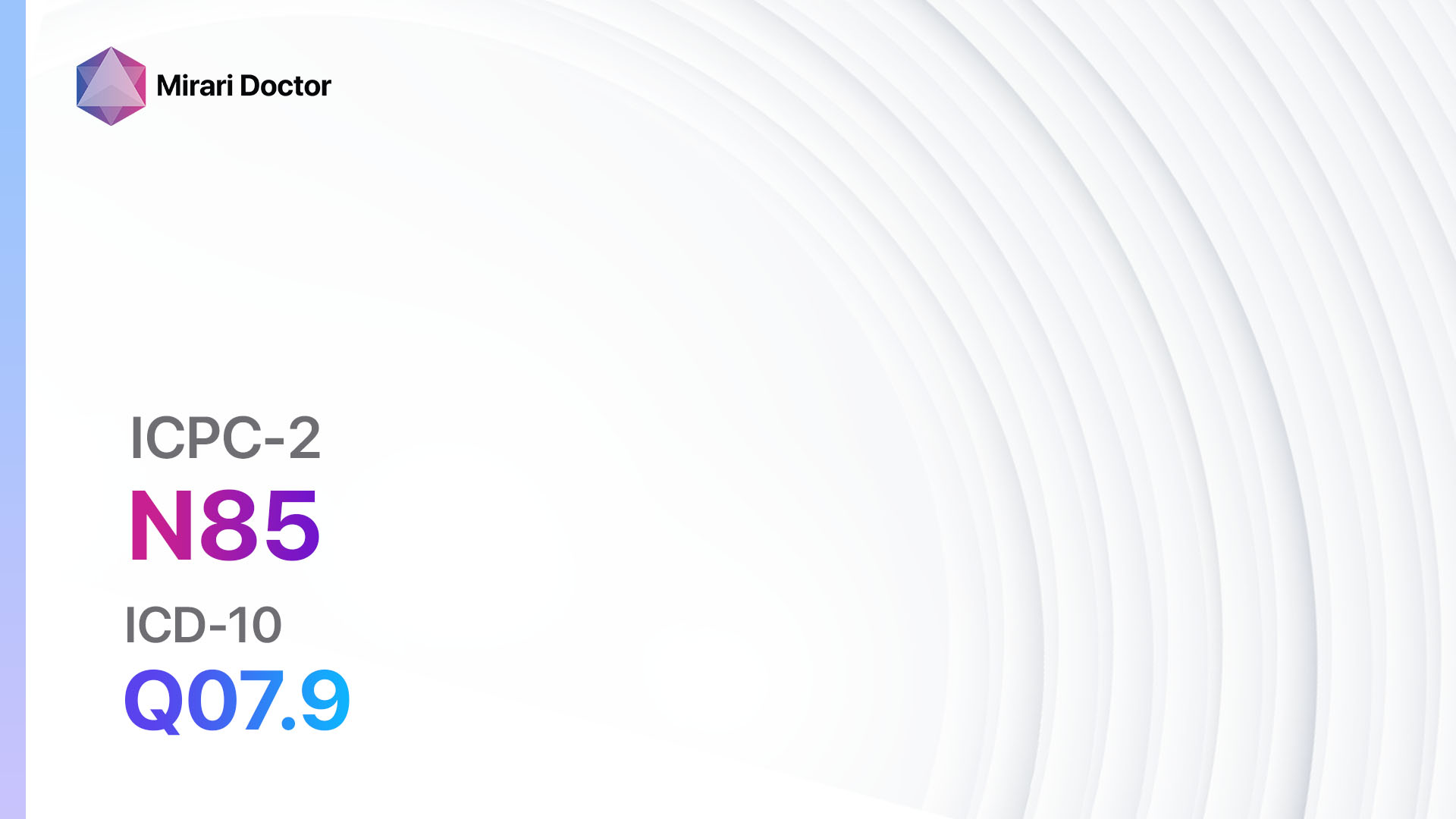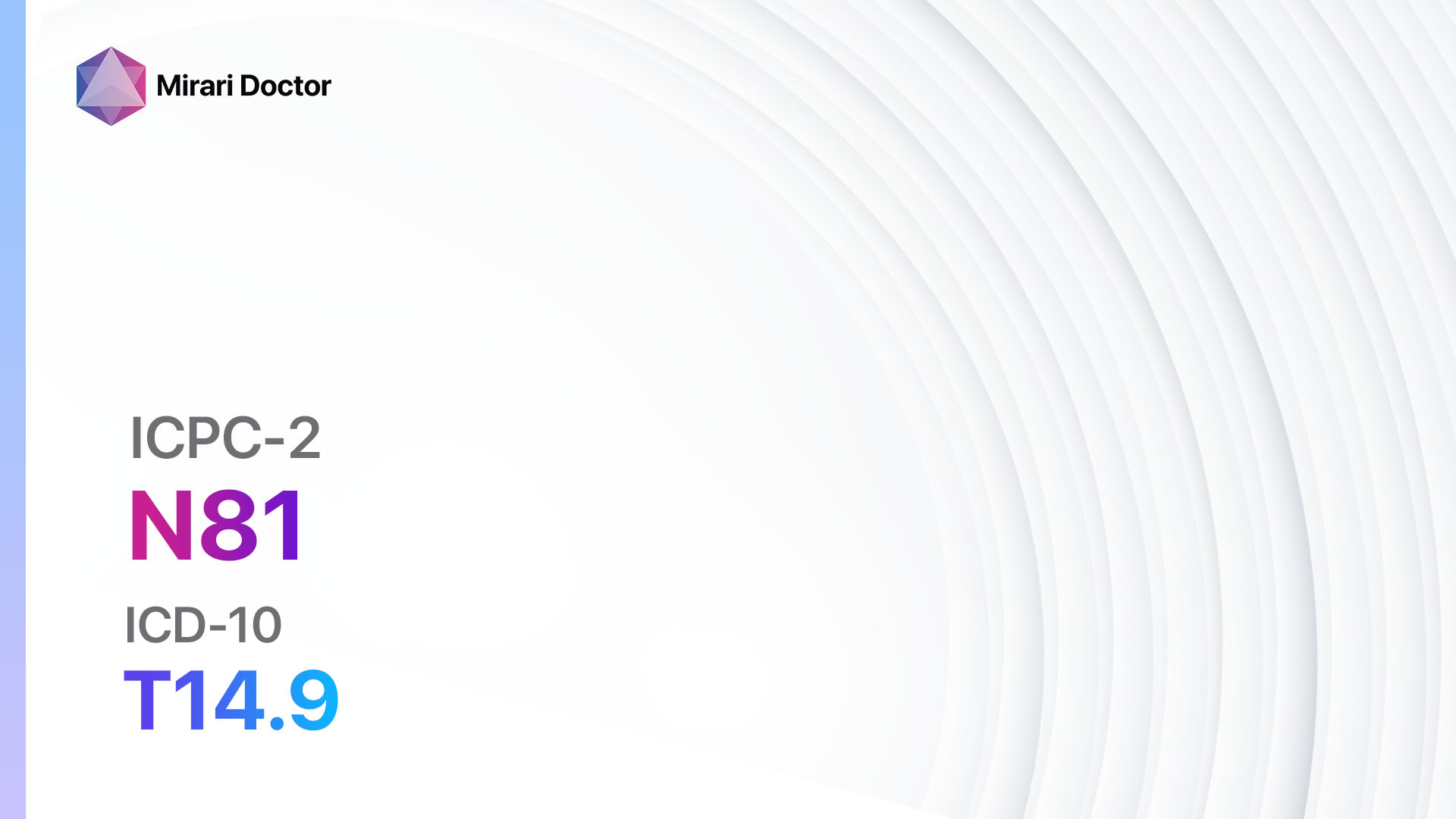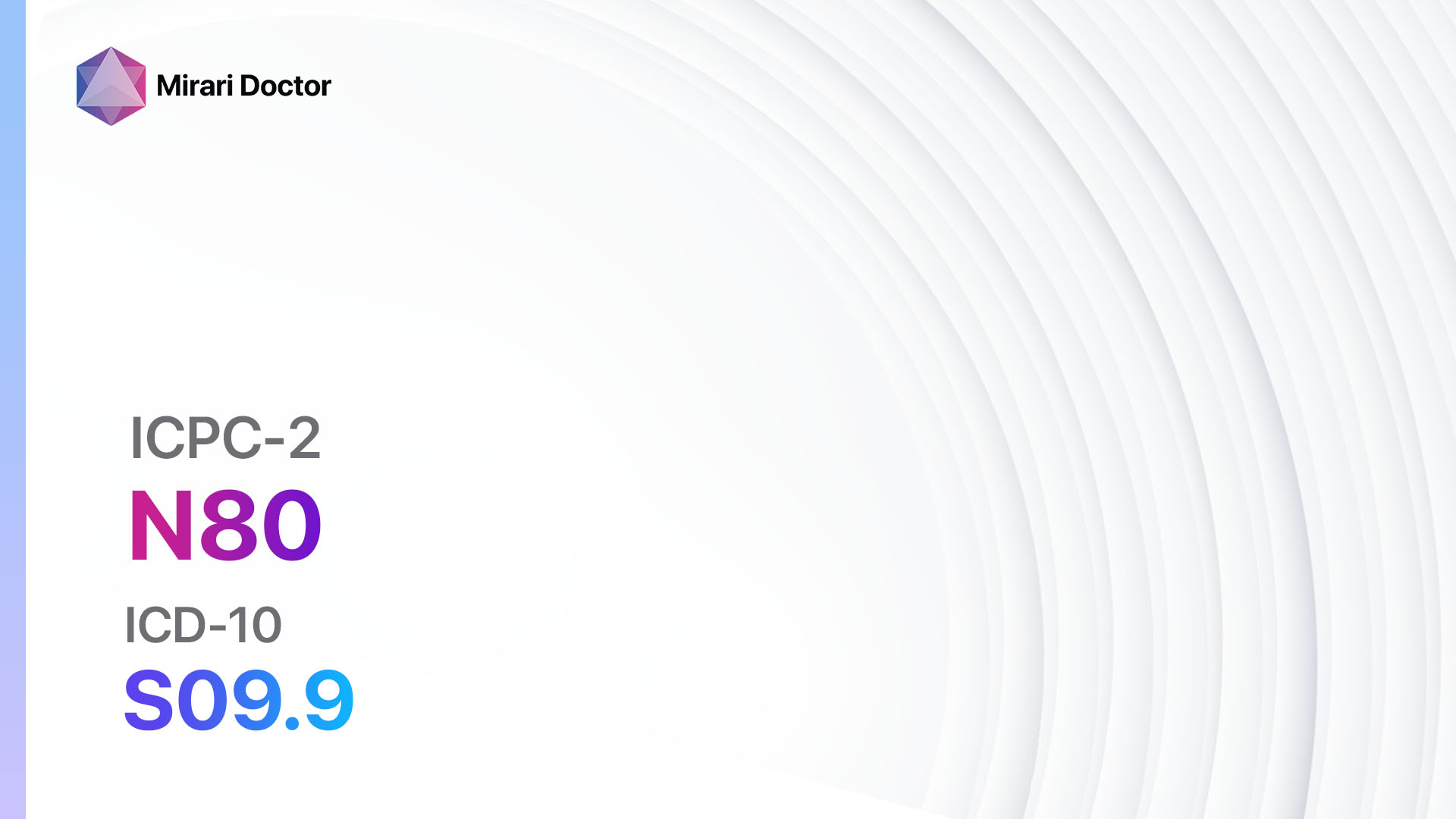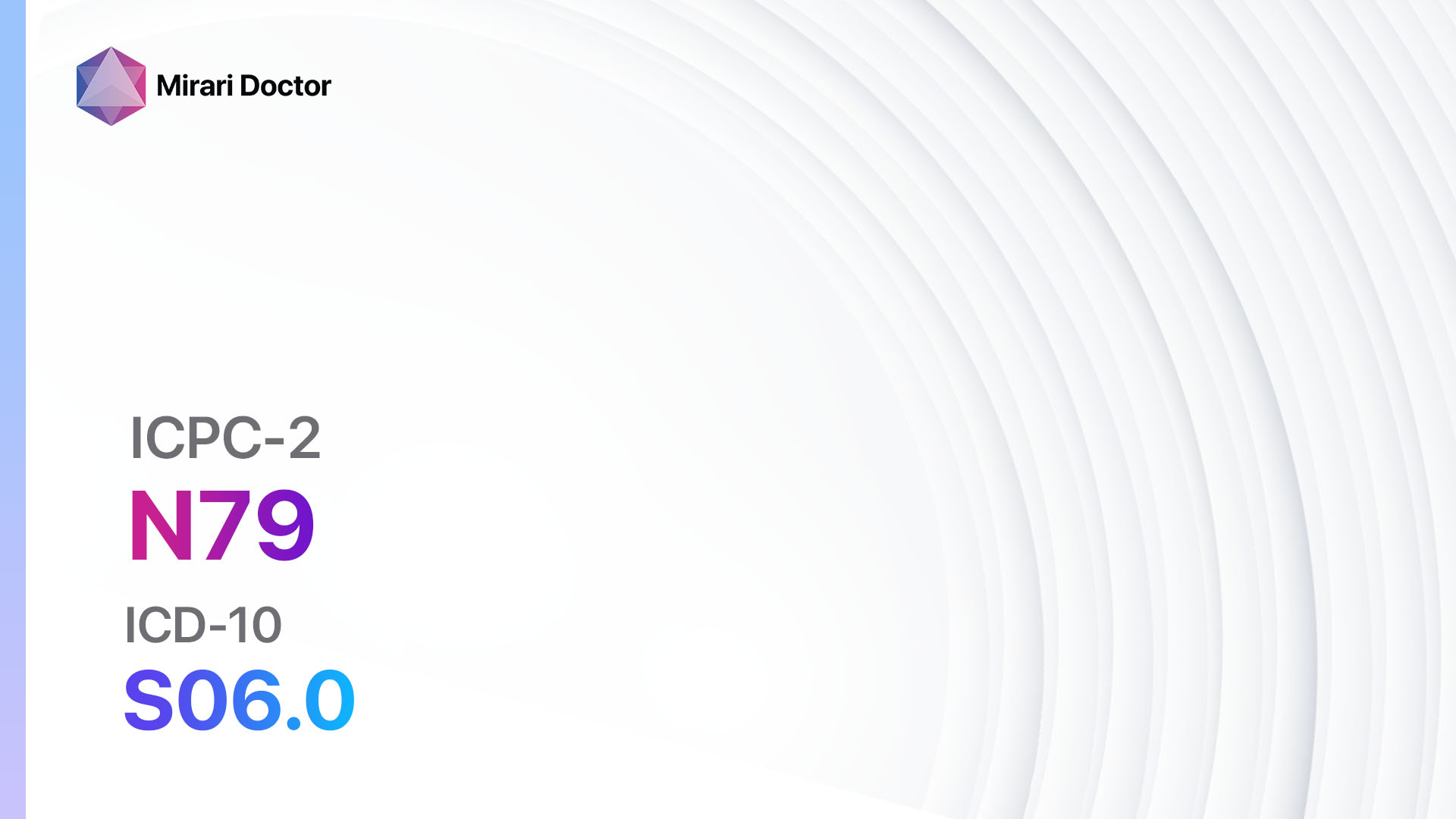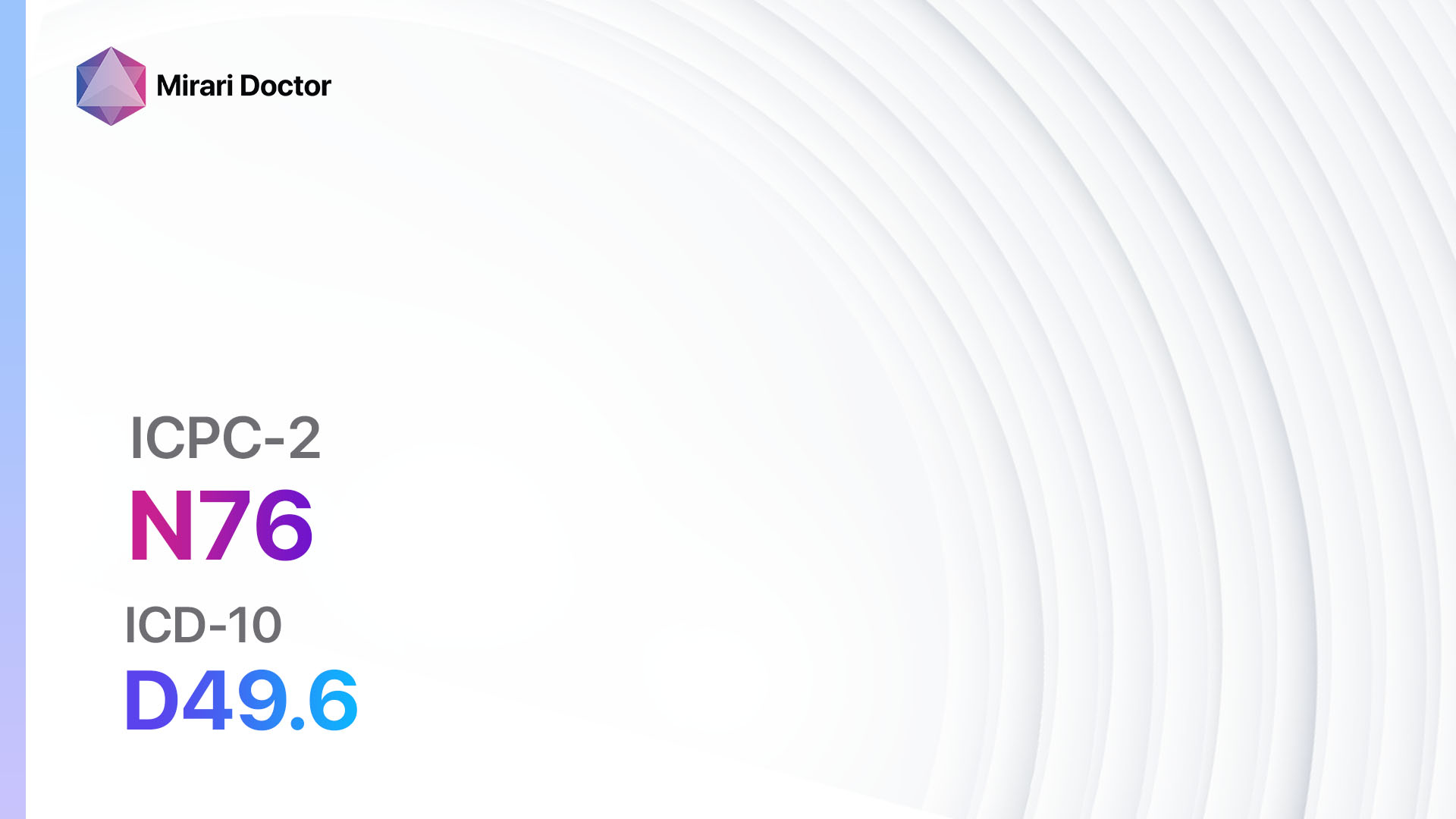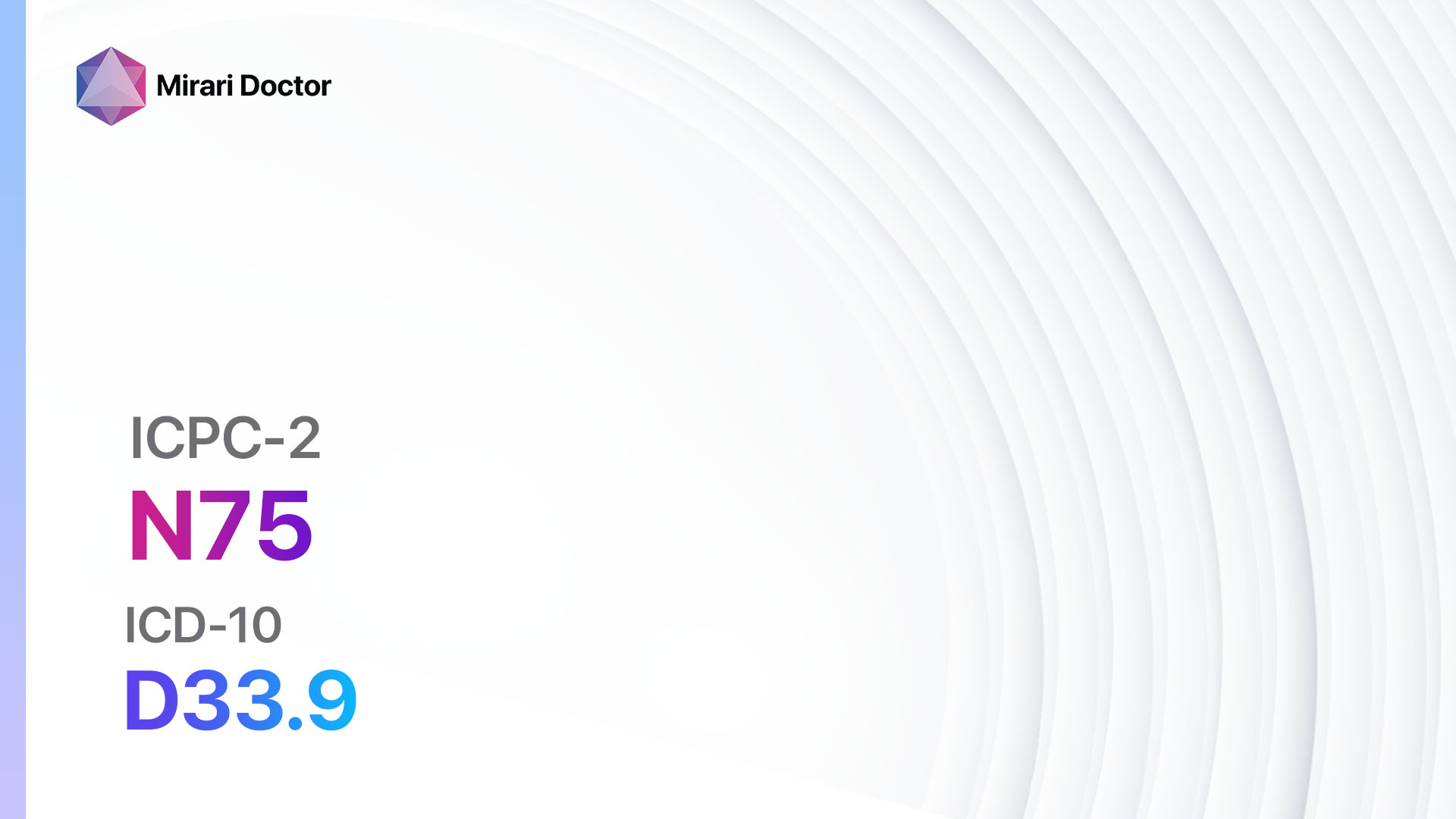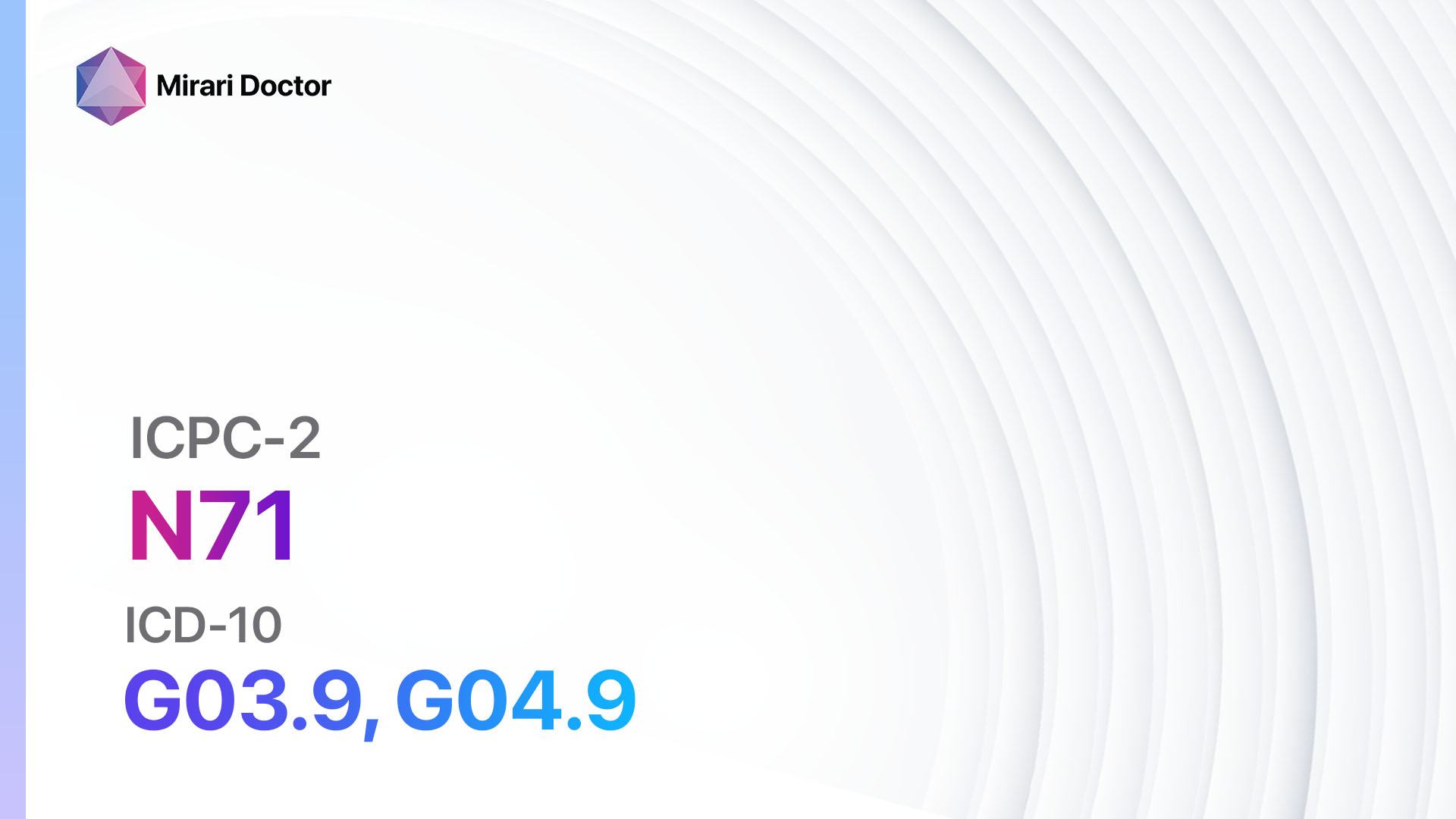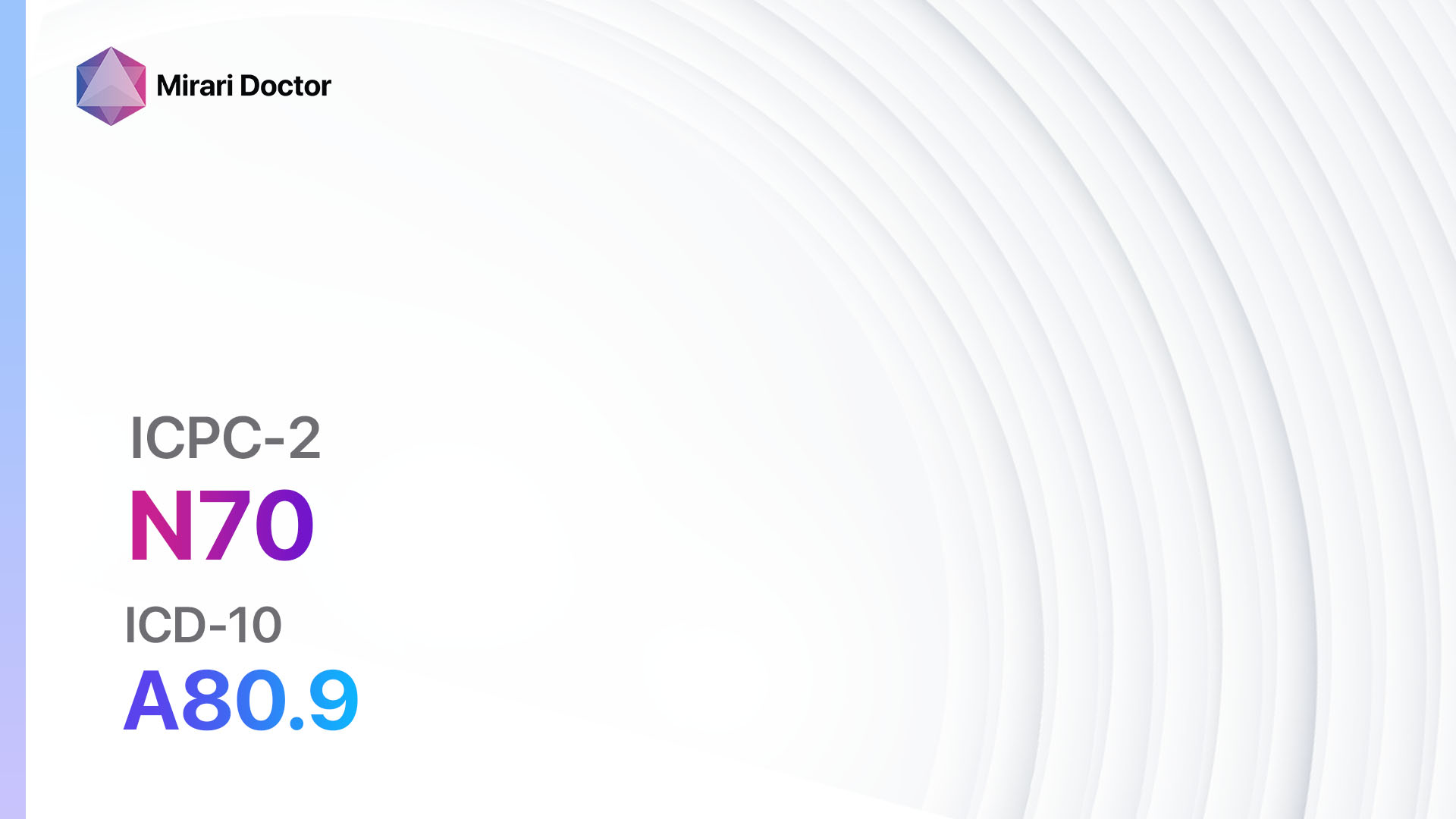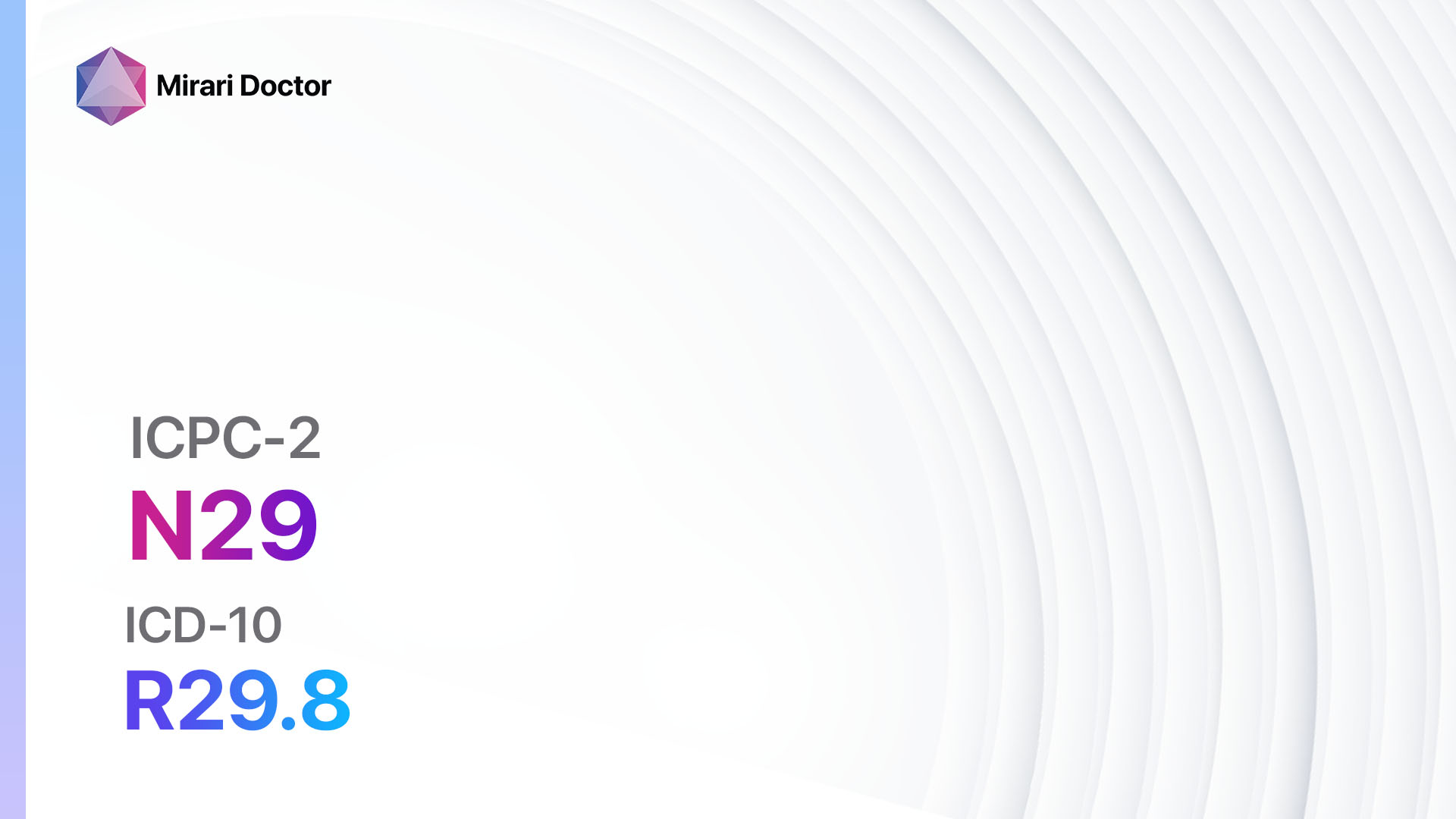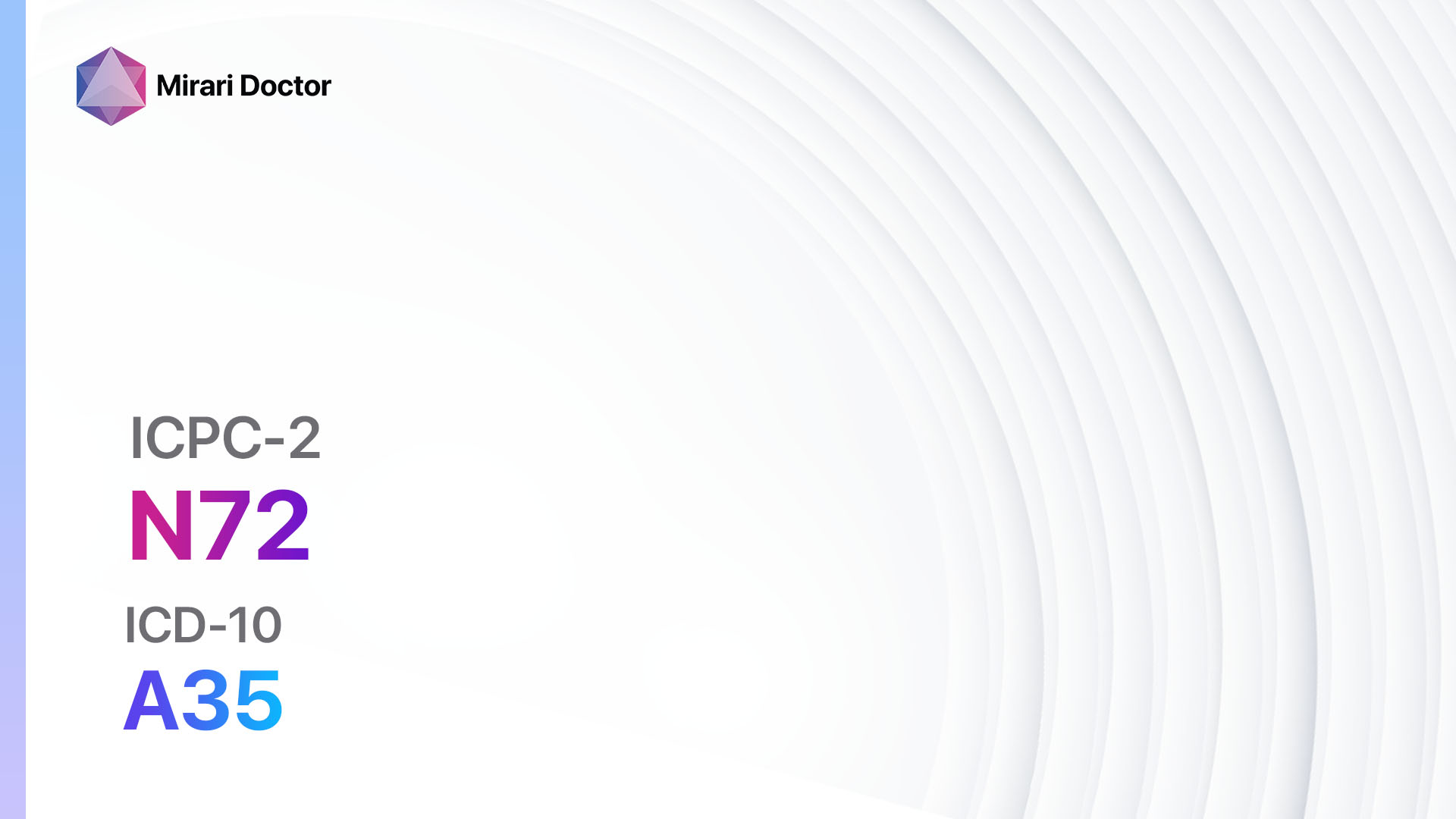
Introduction
Tetanus is a serious bacterial infection caused by the bacterium Clostridium tetani[1]. It is characterized by muscle stiffness and spasms, often starting in the jaw and neck and spreading to other parts of the body[2]. Tetanus can be life-threatening if left untreated[3]. The aim of this guide is to provide a comprehensive overview of the symptoms, causes, diagnostic steps, possible interventions, and patient education for tetanus.
Codes
Symptoms
- Jaw stiffness and muscle spasms (trismus)[2]
- Stiffness and spasms in the neck, chest, back, and abdominal muscles[4]
- Difficulty swallowing and breathing[5]
- Fever and sweating[6]
- Rapid heart rate[6]
- High blood pressure[6]
Causes
- Contamination of wounds with the bacterium Clostridium tetani, commonly found in soil, dust, and animal feces[1][7]
- Puncture wounds, burns, and deep cuts[8]
- Surgical procedures performed under unsterile conditions[9]
- Injection drug use with contaminated needles[9]
Diagnostic Steps
Medical History
- Obtain a detailed medical history, including information about recent injuries, surgeries, or other potential sources of infection.
- Ask about symptoms such as muscle stiffness, spasms, and difficulty swallowing or breathing.
Physical Examination
- Perform a thorough physical examination, paying close attention to muscle stiffness and spasms, particularly in the jaw, neck, and back.
- Check for other signs of infection, such as fever, rapid heart rate, and high blood pressure[6].
Laboratory Tests
- Blood tests: Measure levels of antibodies against the tetanus toxin to confirm the diagnosis.
- Wound culture: Collect a sample from the wound to identify the presence of Clostridium tetani bacteria.
Diagnostic Imaging
- X-rays: May be used to assess for fractures or foreign bodies that could be potential sources of infection.
- CT scans: Can provide detailed images of the brain and spinal cord to evaluate for any complications of tetanus.
Other Tests
- Electromyography (EMG): Measures the electrical activity of muscles to assess for abnormalities associated with tetanus.
- Lumbar puncture: May be performed to analyze cerebrospinal fluid for signs of infection or inflammation.
Follow-up and Patient Education
- Provide appropriate treatment and closely monitor the patient’s progress.
- Educate the patient about the importance of wound care, including cleaning and disinfecting wounds promptly.
- Advise the patient to keep up to date with tetanus vaccinations to prevent future infections.
Possible Interventions
Traditional Interventions
Medications:
Top 5 drugs for Tetanus:
- Tetanus immune globulin (TIG):
- Cost: $100-$500 per dose.
- Contraindications: Hypersensitivity to immunoglobulins.
- Side effects: Allergic reactions, fever, headache.
- Severe side effects: Anaphylaxis.
- Drug interactions: None reported.
- Warning: Should be administered as soon as possible after exposure to tetanus.
- Muscle relaxants (e.g., Diazepam, Baclofen):
- Cost: Generic versions can be $10-$50/month.
- Contraindications: Hypersensitivity, severe respiratory insufficiency.
- Side effects: Drowsiness, dizziness, muscle weakness.
- Severe side effects: Respiratory depression, liver toxicity.
- Drug interactions: Other sedatives, alcohol.
- Warning: May cause drowsiness and impair coordination.
- Antibiotics (e.g., Metronidazole, Penicillin):
- Cost: Generic versions can be $10-$50/month.
- Contraindications: Hypersensitivity to antibiotics.
- Side effects: Nausea, diarrhea, allergic reactions.
- Severe side effects: Severe allergic reactions, Clostridium difficile infection.
- Drug interactions: Warfarin, phenytoin.
- Warning: Use with caution in patients with liver disease.
- Analgesics (e.g., Acetaminophen, Ibuprofen):
- Cost: Generic versions can be $3-$10/month.
- Contraindications: Hypersensitivity to analgesics, severe liver disease.
- Side effects: Upset stomach, rash, liver toxicity.
- Severe side effects: Severe allergic reactions, liver failure.
- Drug interactions: Warfarin, aspirin.
- Warning: Avoid excessive use to prevent liver damage.
- Antispasmodics (e.g., Dantrolene, Botulinum toxin):
- Cost: Dantrolene – $100-$500/month, Botulinum toxin – $500-$1500 per treatment.
- Contraindications: Hypersensitivity, liver disease.
- Side effects: Drowsiness, dizziness, muscle weakness.
- Severe side effects: Liver toxicity, allergic reactions.
- Drug interactions: Other muscle relaxants, alcohol.
- Warning: Regular liver function tests required for dantrolene.
Alternative Drugs:
- Magnesium sulfate: May be used as an alternative muscle relaxant.
- Clonidine: Can help control blood pressure and reduce muscle spasms.
- Benzodiazepines: May be used as an alternative to diazepam for muscle relaxation.
- Anticonvulsants: Can help control muscle spasms and seizures.
- Opioids: May be used for severe pain management.
Surgical Procedures:
- Wound debridement: Removal of dead or contaminated tissue from the wound to prevent further infection. Cost: $500-$2000.
- Tracheostomy: Creation of an opening in the windpipe to assist with breathing in severe cases. Cost: $5000-$10,000.
Alternative Interventions
- Acupuncture: May help reduce muscle spasms and promote relaxation. Cost: $60-$120 per session.
- Herbal remedies: Some herbs, such as valerian root and passionflower, may have calming effects on the nervous system. Cost: Varies depending on the specific herb and preparation.
- Homeopathic remedies: Certain homeopathic remedies, such as Hypericum and Arnica, may help with pain relief and wound healing. Cost: Varies depending on the specific remedy and preparation.
- Nutritional supplements: Vitamin C and zinc supplements may support the immune system and aid in wound healing. Cost: Varies depending on the specific supplement.
- Hyperbaric oxygen therapy: Involves breathing pure oxygen in a pressurized chamber to increase oxygen delivery to tissues. Cost: $200-$300 per session.
Lifestyle Interventions
- Proper wound care: Clean and disinfect wounds promptly to prevent infection. Cost: Varies depending on the wound care products used.
- Vaccination: Ensure up-to-date tetanus vaccinations to prevent future infections. Cost: Varies depending on the healthcare provider and insurance coverage.
- Stress management techniques: Practices such as meditation, deep breathing exercises, and yoga may help reduce muscle tension and promote relaxation. Cost: Varies depending on the specific technique and instructor.
- Physical therapy: Stretching and strengthening exercises may help improve muscle function and reduce spasms. Cost: Varies depending on the healthcare provider and insurance coverage.
- Healthy lifestyle habits: Eating a balanced diet, getting regular exercise, and getting enough sleep can support overall health and immune function. Cost: Varies depending on individual choices and preferences.
It is important to note that the cost ranges provided are approximate and may vary depending on the location and availability of the interventions. It is recommended to consult with healthcare professionals for specific cost information and personalized treatment plans.
Mirari Cold Plasma Alternative Intervention
Understanding Mirari Cold Plasma
- Safe and Non-Invasive Treatment: Mirari Cold Plasma is a safe and non-invasive treatment option for various skin conditions. It does not require incisions, minimizing the risk of scarring, bleeding, or tissue damage.
- Efficient Extraction of Foreign Bodies: Mirari Cold Plasma facilitates the removal of foreign bodies from the skin by degrading and dissociating organic matter, allowing easier access and extraction.
- Pain Reduction and Comfort: Mirari Cold Plasma has a local analgesic effect, providing pain relief during the treatment, making it more comfortable for the patient.
- Reduced Risk of Infection: Mirari Cold Plasma has antimicrobial properties, effectively killing bacteria and reducing the risk of infection.
- Accelerated Healing and Minimal Scarring: Mirari Cold Plasma stimulates wound healing and tissue regeneration, reducing healing time and minimizing the formation of scars.
Mirari Cold Plasma Prescription
Video instructions for using Mirari Cold Plasma Device – N72 Tetanus (ICD-10:A35)
| Mild | Moderate | Severe |
| Mode setting: 1 (Infection) Location: 0 (Localized) Morning: 15 minutes, Evening: 15 minutes |
Mode setting: 1 (Infection) Location: 0 (Localized) Morning: 30 minutes, Lunch: 30 minutes, Evening: 30 minutes |
Mode setting: 1 (Infection) Location: 0 (Localized) Morning: 30 minutes, Lunch: 30 minutes, Evening: 30 minutes |
| Mode setting: 2 (Wound Healing) Location: 0 (Localized) Morning: 15 minutes, Evening: 15 minutes |
Mode setting: 2 (Wound Healing) Location: 0 (Localized) Morning: 30 minutes, Lunch: 30 minutes, Evening: 30 minutes |
Mode setting: 2 (Wound Healing) Location: 0 (Localized) Morning: 30 minutes, Lunch: 30 minutes, Evening: 30 minutes |
| Mode setting: 7 (Immunotherapy) Location: 6 (Throat, Lymphatic & Thyroid) Morning: 15 minutes, Evening: 15 minutes |
Mode setting: 7 (Immunotherapy) Location: 6 (Throat, Lymphatic & Thyroid) Morning: 30 minutes, Lunch: 30 minutes, Evening: 30 minutes |
Mode setting: 7 (Immunotherapy) Location: 6 (Throat, Lymphatic & Thyroid) Morning: 30 minutes, Lunch: 30 minutes, Evening: 30 minutes |
| Mode setting: 7 (Immunotherapy) Location: 1 (Sacrum) Morning: 15 minutes, Evening: 15 minutes |
Mode setting: 7 (Immunotherapy) Location: 1 (Sacrum) Morning: 30 minutes, Lunch: 30 minutes, Evening: 30 minutes |
Mode setting: 7 (Immunotherapy) Location: 1 (Sacrum) Morning: 30 minutes, Lunch: 30 minutes, Evening: 30 minutes |
| Total Morning: 60 minutes approx. $10 USD, Evening: 60 minutes approx. $10 USD |
Total Morning: 120 minutes approx. $20 USD, Lunch: 120 minutes approx. $20 USD, Evening: 120 minutes approx. $20 USD, |
Total Morning: 120 minutes approx. $20 USD, Lunch: 120 minutes approx. $20 USD, Evening: 120 minutes approx. $20 USD, |
| Usual treatment for 7-60 days approx. $140 USD – $1200 USD | Usual treatment for 6-8 weeks approx. $2,520 USD – $3,360 USD |
Usual treatment for 3-6 months approx. $5,400 USD – $10,800 USD
|
 |
|
Use the Mirari Cold Plasma device to treat Tetanus effectively.
WARNING: MIRARI COLD PLASMA IS DESIGNED FOR THE HUMAN BODY WITHOUT ANY ARTIFICIAL OR THIRD PARTY PRODUCTS. USE OF OTHER PRODUCTS IN COMBINATION WITH MIRARI COLD PLASMA MAY CAUSE UNPREDICTABLE EFFECTS, HARM OR INJURY. PLEASE CONSULT A MEDICAL PROFESSIONAL BEFORE COMBINING ANY OTHER PRODUCTS WITH USE OF MIRARI.[10]
Step 1: Cleanse the Skin
- Start by cleaning the affected area of the skin with a gentle cleanser or mild soap and water. Gently pat the area dry with a clean towel.
Step 2: Prepare the Mirari Cold Plasma device
- Ensure that the Mirari Cold Plasma device is fully charged or has fresh batteries as per the manufacturer’s instructions. Make sure the device is clean and in good working condition.
- Switch on the Mirari device using the power button or by following the specific instructions provided with the device.
- Some Mirari devices may have adjustable settings for intensity or treatment duration. Follow the manufacturer’s instructions to select the appropriate settings based on your needs and the recommended guidelines.
Step 3: Apply the Device
- Place the Mirari device in direct contact with the affected area of the skin. Gently glide or hold the device over the skin surface, ensuring even coverage of the area experiencing.
- Slowly move the Mirari device in a circular motion or follow a specific pattern as indicated in the user manual. This helps ensure thorough treatment coverage.
Step 4: Monitor and Assess:
- Keep track of your progress and evaluate the effectiveness of the Mirari device in managing your Tetanus. If you have any concerns or notice any adverse reactions, consult with your health care professional.
Note
This guide is for informational purposes only and should not replace the advice of a medical professional. Always consult with your healthcare provider or a qualified medical professional for personal advice, diagnosis, or treatment. Do not solely rely on the information presented here for decisions about your health. Use of this information is at your own risk. The authors of this guide, nor any associated entities or platforms, are not responsible for any potential adverse effects or outcomes based on the content.
Mirari Cold Plasma System Disclaimer
- Purpose: The Mirari Cold Plasma System is a Class 2 medical device designed for use by trained healthcare professionals. It is registered for use in Thailand and Vietnam. It is not intended for use outside of these locations.
- Informational Use: The content and information provided with the device are for educational and informational purposes only. They are not a substitute for professional medical advice or care.
- Variable Outcomes: While the device is approved for specific uses, individual outcomes can differ. We do not assert or guarantee specific medical outcomes.
- Consultation: Prior to utilizing the device or making decisions based on its content, it is essential to consult with a Certified Mirari Tele-Therapist and your medical healthcare provider regarding specific protocols.
- Liability: By using this device, users are acknowledging and accepting all potential risks. Neither the manufacturer nor the distributor will be held accountable for any adverse reactions, injuries, or damages stemming from its use.
- Geographical Availability: This device has received approval for designated purposes by the Thai and Vietnam FDA. As of now, outside of Thailand and Vietnam, the Mirari Cold Plasma System is not available for purchase or use.
References
- Tetanus – World Health Organization (WHO). (2023, August 24). Retrieved from https://www.who.int/news-room/fact-sheets/detail/tetanus
- Tetanus (Lockjaw): Causes, Symptoms, and Diagnosis – Healthline. (n.d.). Retrieved from https://www.healthline.com/health/tetanus
- Tetanus – Symptoms and causes – Mayo Clinic. (2023, December 21). Retrieved from https://www.mayoclinic.org/diseases-conditions/tetanus/symptoms-causes/syc-20351625
- Tetanus – StatPearls – NCBI Bookshelf. (n.d.). Retrieved from https://www.ncbi.nlm.nih.gov/books/NBK459217/
- Symptoms – Tetanus – Canada.ca. (2023, May 15). Retrieved from https://www.canada.ca/en/public-health/services/immunization/vaccine-preventable-diseases/tetanus/symptoms.html
- Tetanus: Symptoms, causes, and treatments – MedicalNewsToday. (2023, June 26). Retrieved from https://www.medicalnewstoday.com/articles/163063
- Tetanus – Wikipedia. (n.d.). Retrieved from https://en.wikipedia.org/wiki/Tetanus
- The Life-Threatening Risk of a Dirty Wound: A Lesson From the Past. (2020, August 23). Retrieved from https://www.ncbi.nlm.nih.gov/pmc/articles/PMC7510501/
- Pinkbook: Tetanus – CDC. (n.d.). Retrieved from https://www.cdc.gov/vaccines/pubs/pinkbook/tetanus.html
- Tetanus – StatPearls – NCBI Bookshelf. (n.d.). Retrieved from https://www.ncbi.nlm.nih.gov/books/NBK459217/
Related articles
Made in USA



